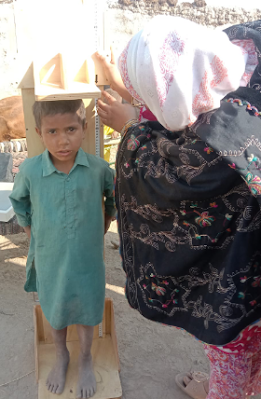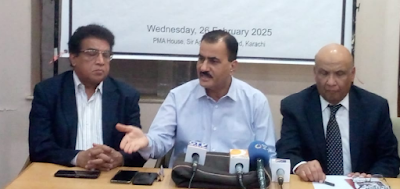Beyond statistics: Regional inequalities and socioeconomic planning
By Muhammad Kazim Jafri
Regional disparities in socioeconomic progress are a
stark reality in unequal-income countries, despite frequent assessments of
overall progress. While some areas struggle with stagnation, unemployment, and
inadequate infrastructure, others thrive with vibrant industries and high
incomes. This disparity poses significant challenges for policymakers and
socioeconomic planners, who must balance competing needs and priorities.
Reliable data is the foundation of informed planning and policy development. Academia and policymakers rely heavily on governmental and nongovernmental statistics to devise policies, launch developmental projects, and make informed decisions at national and provincial levels. Socioeconomic surveys and reports provide critical insights into inequality, enabling planners to prioritise their efforts.
Taking Sindh as a case in point, a closer examination
of provincial socioeconomic indicators reveals a more nuanced picture. While
Sindh is often ranked as Pakistan’s second most developed province, a deeper
dive into the data (Multiple
Indicator Cluster Survey (MICS) Sindh 2018-19) exposes significant
internal regional disparities. Karachi stands out as an outlier, performing
better in various indicators such as education, health, and sanitation.
However, this masks the struggles of Sindh’s most deprived districts,
ultimately skewing the aggregate results.
Consider the issue of out-of-school children (OOSC),
which is one of the hottest issues not only in the Sindh province but also in
the overall country. After the results of the Population Census 2023, in which
26 million children were reported out-of-school in Pakistan, the Prime Minister
declared a national-level education emergency and advised provincial
governments to formulate foundational learning policies.
The prevalence of primary age out-of-school children reported in Sindh MICS 2018-19 is 42.7%, though if we see the division-wise breakup of this indicator, OOSC in Hyderabad Division is 55.8%, in Sukkur Division it is 38.0%, in Larkana Division 54.8%, in Shaheed Benazirabad Division 45.6%, and Mirpurkhas Division 48.8%, while the percentage is reported low in Karachi Division at 23.3%. Due to this skewed distribution, the provincial results are normalised despite the significant variation that exists among the divisions.
Similarly, from the health perspective, the disparities in the prevalence of one of the malnutrition indicators, such as stunting, can be discussed here. The overall stunting (moderate & severe) rate reported in the Sindh MICS was 50.2%, while the highest figure for this indicator was reported in Sujawal and Jamshoro, around 72%, and the minimum was reported in Karachi at 34.2%. In this condition, the negative pressure put on the provincial figures and the provincial statistics unnecessarily deteriorated due to a few districts. So, it simply concludes that huge variation among different regions creates volatile results and the aggregate or overall prevalence do not reflect the true picture which might further cause misplanning and misallocation of resources.
A framework for tackling regional disparities through inclusive and sustainable development initiatives is offered by the Sustainable Development Goals (SDGs). Goal11 emphasises on developing sustainable cities and communities, while Goal 10 focuses on reducing inequalities.
This requires
making investments in environment-friendly infrastructure, encouraging digital
inclusion, and guaranteeing equitable access to healthcare and education across
all regions. To address this issue, we need to increase the data literacy, and
the government and other relevant departments should build the capacity of data
users, through which they can understand the complexities of statistical
reports like MICS, PSLM, PDHS, etc. and can utilise the information
appropriately.
Economic planners have a significant obstacle in the form of regional inequality. To achieve equitable growth, specific measures are required; a one-size-fits-all strategy is not sufficient. Governments may foster a more equitable and sustainable economic future for all areas by tackling systemic inequality and promoting inclusive economic policies.
In this
regard, separate regional reports should be compiled, and provincial ranking
should be based on the gap between the most deprived and least deprived regions
of the province (absolute measure of inequality). Greater the inequality size
should be ranked lower. To ensure equitable planning more resources should be
allocated to underprivileged regions.
Photos courtesy: Author
The
writer, a senior officer at the Sindh Bureau of Statistics, is pursuing a PhD
degree at IBA Karachi.








Comments
Post a Comment